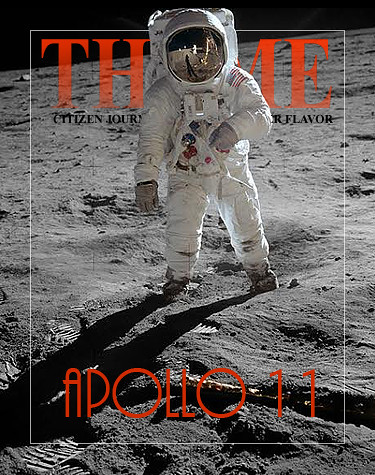
Volume XVII, Issue II
The First Humans on Another World

The crew of Apollo 11 (from left to right): Neil Armstrong, Michael Collins, and Edwin (“Buzz”) Aldrin. NASA Photo.
Fifty years ago on July 16th, the mighty Saturn V rocket carrying Apollo 11 lifted off from Cape Kennedy. Astronauts Neil Armstrong, Michael Collins and Edwin Aldrin flew with the first Lunar Module capable of actually landing. Though the astronauts had practiced this over and over in simulators, there was no way of knowing what their chances would be of actually landing. Armstrong even admits that he considered this to be merely the first attempt.
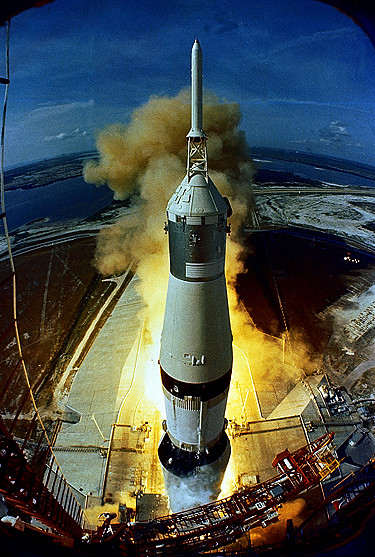
Apollo 11 liftoff. NASA Photo.
Armstrong and Aldrin would proceed to fly the Lunar Module toward the lunar surface. Their descent would not be an easy one. Their computer overloaded, almost prompting an abort. Then the computer guided them to a landing area strewn with boulders. Armstrong took manual control of the spacecraft and skimmed along until he saw a better landing sight. Running critically low on descent stage fuel, Armstrong pushed on and brought the Eagle down. With five percent fuel remaining he gently eased the lander down onto the moon. “The Eagle has Landed!”
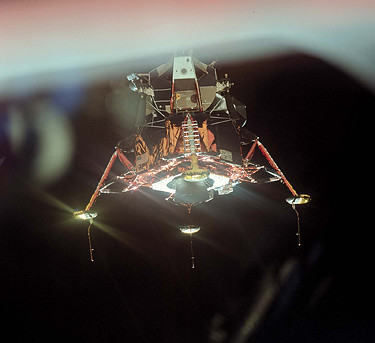
The Lunar Lander, Eagle. NASA Photo.
John F. Kennedy
Address at Rice University on the Space Effort
September 12, 1962
Speech Transcript
President Pitzer, Mr. Vice President, Governor, Congressman Thomas, Senator Wiley, and Congressman Miller, Mr. Webb. Mr. Bell, scientists, distinguished guests, and ladies and gentlemen:
I appreciate your president having made me an honorary visiting professor, and I will assure you that my first lecture will be very brief. I am delighted to be here and I'm particularly delighted to be here on this occasion.
We meet at a college noted for knowledge, in a city noted for progress, in a State noted for strength, and we stand in need of all three, for we meet in an hour of change and challenge, in a decade of hope and fear, in an age of both knowledge and ignorance. The greater our knowledge increases, the greater our ignorance unfolds.
Despite the striking fact that most of the scientists that the world has ever known are alive and working today, despite the fact that this Nation's own scientific manpower is doubling every 12 years in a rate of growth more than three times that of our population as a whole, despite that, the vast stretches of the unknown and the unanswered and the unfinished still far out-strip our collective comprehension.
No man can fully grasp how far and how fast we have come, but condense, if you will, the 50,000 years of man's recorded history in a time span of but a half century. Stated in these terms, we know very little about the first 40 years, except at the end of them advanced man had learned to use the skins of animals to cover them. Then about 10 years ago, under this standard, man emerged from his caves to construct other kinds of shelter.
Only 5 years ago man learned to write and use a cart with wheels. Christianity began less than 2 years ago. The printing press came this year, and then less than 2 months ago, during this whole 50-year span of human history, the steam engine provided a new source of power.
Newton explored the meaning of gravity. Last month electric lights and telephones and automobiles and airplanes became available. Only last week did we develop penicillin and television and nuclear power, and now if America's new spacecraft succeeds in reaching Venus, we will have literally reached the stars before midnight tonight. This is a breathtaking pace, and such a pace cannot help but create new ills as it dispels old, new ignorance, new problems, new dangers. Surely the opening vistas of space promise high costs and hardships, as well as high reward.
So it is not surprising that some would have us stay where we are a little longer to rest, to wait. But this city of Houston, this State of Texas, this country of the United States was not built by those who waited and rested and wished to look behind them. This country was conquered by those who moved forward-and so will space.
William Bradford, speaking in 1630 of the founding of the Plymouth Bay Colony, said that all great and honorable actions are accompanied with great difficulties, and both must be enterprised and overcome with answerable courage.
If this capsule history of our progress teaches us anything, it is that man, in his quest for knowledge and progress, is determined and cannot be deterred. The exploration of space will go ahead, whether we join in it or not, and it is one of the great adventures of all time, and no nation which expects to be the leader of other nations can expect to stay behind in this race for space.
Those who came before us made certain that this country rode the first waves of the industrial revolutions, the first waves of modern invention, and the first wave of nuclear power, and this generation does not intend to founder in the backwash of the coming age of space. We mean to be a part of it - we mean to lead it. For the eyes of the world now look into space, to the moon and to the planets beyond, and we have vowed that we shall not see it governed by a hostile flag of conquest, but by a banner of freedom and peace. We have vowed that we shall not see space filled with weapons of mass destruction, but with instruments of knowledge and understanding.
Yet the vows of this Nation can only be fulfilled if we in this Nation are first, and, therefore, we intend to be first. In short, our leadership in science and in industry, our hopes for peace and security, our obligations to ourselves as well as others, all require us to make this effort, to solve these mysteries, to solve them for the good of all men, and to become the world's leading space-faring nation.
We set sail on this new sea because there is new knowledge to be gained, and new rights to be won, and they must be won and used for the progress of all people. For space science, like nuclear science and all technology, has no conscience of its own. Whether it will become a force for good or ill depends on man, and only if the United States occupies a position of pre-eminence can we help decide whether this new ocean will be a sea of peace or a new terrifying theater of war. I do not say that we should or will go unprotected against the hostile misuse of space any more than we go unprotected against the hostile use of land or sea, but I do say that space can be explored and mastered without feeding the fires of war, without repeating the mistakes that man has made in extending his writ around this globe of ours.
There is no strife, no prejudice, no national conflict in outer space as yet. Its hazards are hostile to us all. Its conquest deserves the best of all mankind, and its opportunity for peaceful cooperation may never come again. But why, some say, the moon? Why choose this as our goal? And they may well ask why climb the highest mountain. Why, 35 years ago, fly the Atlantic? Why does Rice play Texas?
We choose to go to the moon. We choose to go to the moon in this decade and do the other things, not because they are easy, but because they are hard, because that goal will serve to organize and measure the best of our energies and skills, because that challenge is one that we are willing to accept, one we are unwilling to postpone, and one which we intend to win, and the others, too.
It is for these reasons that I regard the decision last year to shift our efforts in space from low to high gear as among the most important decisions that will be made during my incumbency in the Office of the Presidency.
In the last 24 hours we have seen facilities now being created for the greatest and most complex exploration in man's history. We have felt the ground shake and the air shattered by the testing of a Saturn C-1 booster rocket, many times as powerful as the Atlas which launched John Glenn, generating power equivalent to 10,000 automobiles with their accelerators on the floor. We have seen the site where five F-1 rocket engines, each one as powerful as all eight engines of the Saturn combined, will be clustered together to make the advanced Saturn missile, assembled in a new building to be built at Cape Canaveral as tall as a 48-story structure, as wide as a city block, and as long as two lengths of this field.
Within these last 19 months at least 45 satellites have circled the earth. Some 40 of them were "made in the United States of America" and they were far more sophisticated and supplied far more knowledge to the people of the world than those of the Soviet Union. The Mariner spacecraft now on its way to Venus is the most intricate instrument in the history of space science. The accuracy of that shot is comparable to firing a missile from Cape Canaveral and dropping it in this stadium between the 40-yard lines. Transit satellites are helping our ships at sea to steer a safer course. Tiros satellites have given us unprecedented warnings of hurricanes and storms, and will do the same for forest fires and icebergs.
We have had our failures, but so have others, even if they do not admit them. And they may be less public.
To be sure, we are behind, and will be behind for some time in manned flight. But we do not intend to stay behind, and in this decade we shall make up and move ahead. The growth of our science and education will be enriched by new knowledge of our universe and environment, by new techniques of learning and mapping and observation, by new tools and computers for industry, medicine, the home as well as the school. Technical institutions, such as Rice, will reap the harvest of these gains.
And finally, the space effort itself, while still in its infancy, has already created a great number of new companies, and tens of thousands of new jobs. Space and related industries are generating new demands in investment and skilled personnel, and this city and this State, and this region, will share greatly in this growth. What was once the furthest outpost on the old frontier of the West will be the furthest outpost on the new frontier of science and space. Houston, your City of Houston, with its Manned Spacecraft Center, will become the heart of a large scientific and engineering community.
During the next 5 years the National Aeronautics and Space Administration expects to double the number of scientists and engineers in this area, to increase its outlays for salaries and expenses to $60 million a year; to invest some $200 million in plant and laboratory facilities; and to direct or contract for new space efforts over $1 billion from this Center in this City.
To be sure, all this costs us all a good deal of money. This year's space budget is three times what it was in January 1961, and it is greater than the space budget of the previous 8 years combined. That budget now stands at $5,400 million a year-a staggering sum, though somewhat less than we pay for cigarettes and cigars every year. Space expenditures will soon rise some more from 40 cents per person per week to more than 50 cents a week for every man, woman, and child in the United States, for we have given this program a high national priority even though I realize that this is in some measure an act of faith and vision, for we do not now know what benefits await us. But if I were to say, my fellow citizens, that we shall send to the moon, 240,000 miles away from the control station in Houston, a giant rocket more than 300 feet tall, the length of this football field, made of new metal alloys, some of which have not yet been invented, capable of standing heat and stresses several times more than have ever been experienced, fitted together with a precision better than the finest watch, carrying all the equipment needed for propulsion, guidance, control, communications, food and survival, on an untried mission, to an unknown celestial body, and then return it safely to earth, reentering the atmosphere at speeds of over 25,000 miles per hour, causing heat about half that of the temperature of the sun - almost as hot as it is here today - and do all this, and do it right, and do it first before this decade is out, then we must be bold. I'm the one who is doing all the work, so we just want you to stay cool for a minute.
[Laughter]
However, I think we're going to do it, and I think that we must pay what needs to be paid. I don't think we ought to waste any money, but I think we ought to do the job. And this will be done in the decade of the sixties. It may be done while some of you are still here at school at this college and university. It will be done during the terms of office of some of the people who sit here on this platform. But it will be done. And it will be done before the end of this decade.
I am delighted that this university is playing a part in putting a man on the moon as part of a great national effort of the United States of America.
Many years ago the great British explorer George Mallory, who was to die on Mount Everest, was asked why did he want to climb it. He said, "Because it is there."
Well, space is there, and we're going to climb it, and the moon and the planets are there, and new hopes for knowledge and peace are there. And, therefore, as we set sail we ask God's blessing on the most hazardous and dangerous and greatest adventure on which man has ever embarked.
Thank you.
NOTE: The President spoke in the Rice University Stadium at 10 a.m. In his opening words he referred to Dr. K. S. Pitzer, President of the University, Vice President Lyndon B. Johnson, Governor Price Daniel of Texas, Representative Albert Thomas of Texas, Senator Alexander Wiley of Wisconsin, Representative George P. Miller of California, James E. Webb, Administrator, National Aeronautics and Space Administration., David E. Bell, Director of the Bureau of the Budget.
Source: Public Papers of the Presidents of the United States, v. 1, 1962, pp. 669-670.
Apollo 11, The Moon Mission
[click to read]
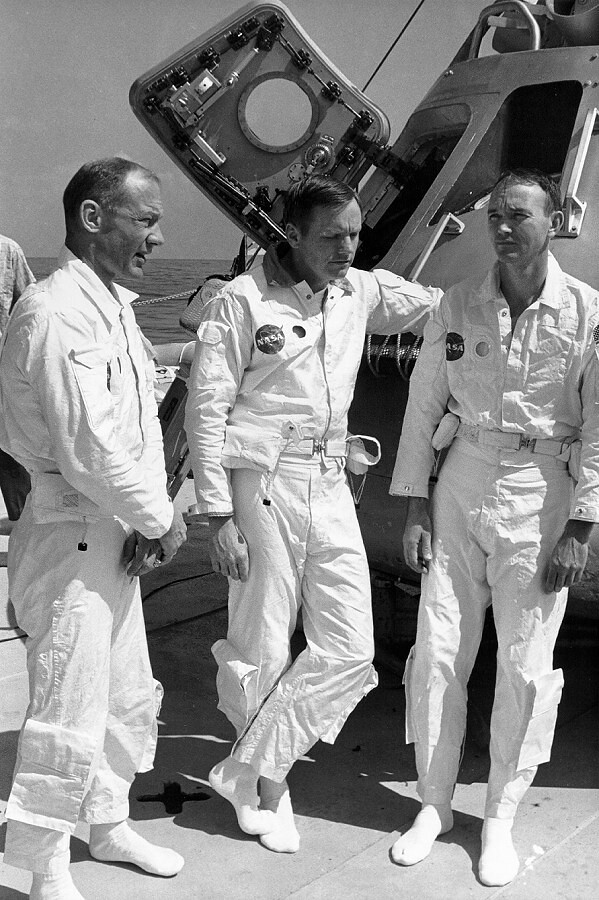
The crew of Apollo 11 relaxes during a training exercise. NASA Photo.
(see more photos)
On Board Apollo Moonships
[click to read]
By Carlos Clarivan
On Board Apollo Moonships contains 100 pages and more than 200 3D-illustrations and images that show in detail the spacecrafts that allowed to travel to the Moon and explore it in the late 1960s and early 70s: from the mighty Saturn V rocket and the Apollo mothership up to the the Lunar Module and the revolutionary Moon Rover. (read more)
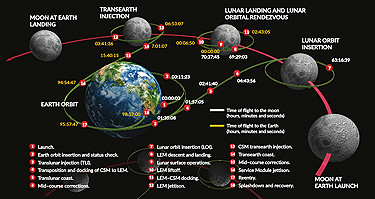
From the Earth to the Moon. Illustration by Carlos Clarivan.
Interview with Neil Armstrong!
The first man to set foot on the moon!
In this rare series of interviews, Neil Armstrong, the first man to set foot on the moon, tells the story of the historic mission from his own perspective. [1.] Alex Malley of Australia's EvoTV's The Bottom Line looks at the life and leadership of the lunar mission's commander. Fascinated by aircraft, even at a very early age, Armstrong obtained his pilot's license at the age of fifteen!
He went on to fly combat missions during the Korean War and later became a test pilot. He then became an astronaut as NASA geared up to meet President John F. Kennedy's challenge to put a man on the moon in the decade and return him safely to earth.
The Russians had already orbited the first satellite, Sputnik, on October 4, 1957 and subsequently orbited cosmonaut Yuri Gagarin as the Americans struggled to develop a dependable booster. After Alan Shepard's short suborbital flight in 1961, President Kennedy challenged the fledgeling space agency to go to the moon.
Armstrong is refreshingly honest in his discussion with Malley. The interview is presented in four parts and is worth watching to the very end. Neil Armstrong expresses very real concern that the space agency lacks the vision and sense of purpose it had in those early years. He ends with a challenge that we as a people would do well to heed and pursue in our own time!
The Full Interview may be found Here [click to listen].
Forty-seven years ago two human beings changed history by walking on the surface of the moon. But what happened before Buzz Aldrin and Neil Armstrong exited the Lunar Module is perhaps even more amazing, if only because so few people know about it.
The First Humans on the Moon
Neil Armstrong Reflected in Buzz Aldrin's Visor
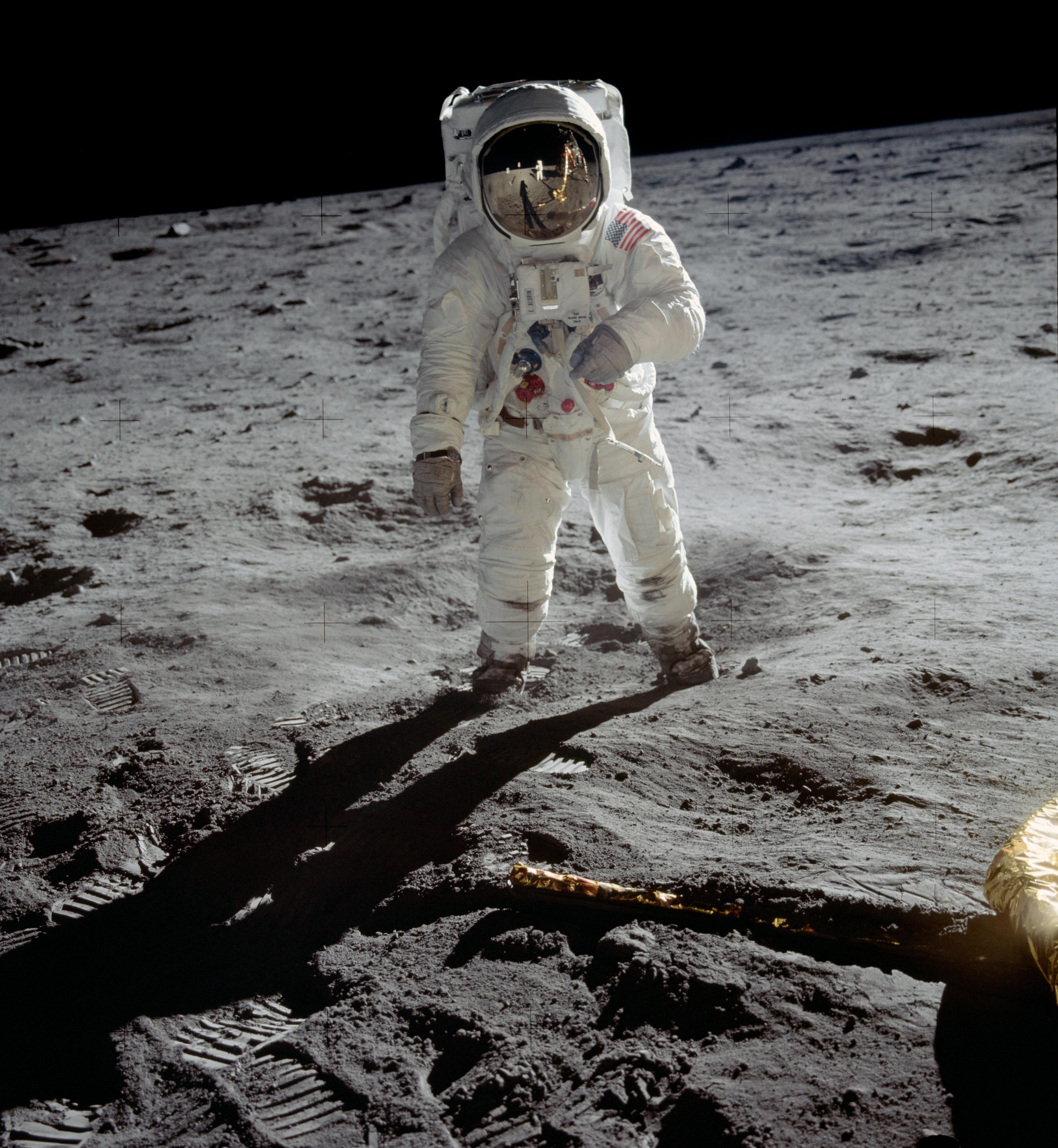
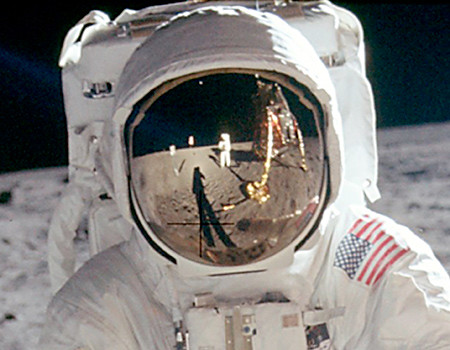
NASA Photos
Neil Armstrong and Buzz Aldrin
The First Humans on the Moon
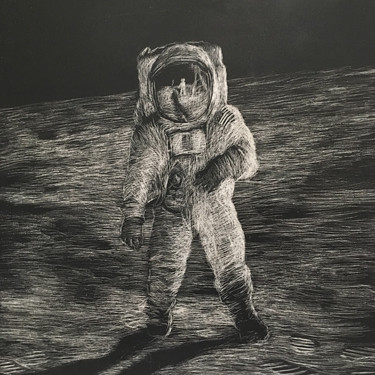
Neil Armstrong is reflected in the visor of Buzz Aldrin, the first two humans to walk on the moon. Scratchboard, 12" x 12" by Bob Kirchman.
60 Years of NASA
[click to read]
Celebrating Where Art and Science Meet
To celebrate NASA’s 60th anniversary this year, the agency partnered with the National Symphony Orchestra to present a concert in Washington entitled “NSO Pops: Space, the Next Frontier.” NASA mission images complemented performances of space-inspired music in the Kennedy Center’s concert hall, including Claude Debussy’s “Clair de Lune” (“Moonlight”), with a video of the Moon created by NASA science visualizer Ernie Wright.
At NASA’s Goddard Space Flight Center in Greenbelt, Maryland, Wright works in the Scientific Visualization Studio, using NASA data to create accurate visuals of celestial bodies. Wright made the lunar imagery accompanying “Clair de Lune” with data from the Lunar Reconnaissance Orbiter (LRO). (read more)
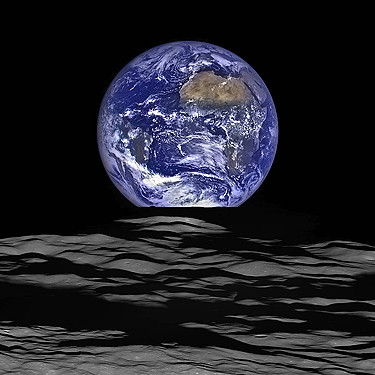
LRO Photo of Earthrise over the moon. NASA Photo.
The World of Tomorrow
Eighty Years Ago the World Came to the NY Fair
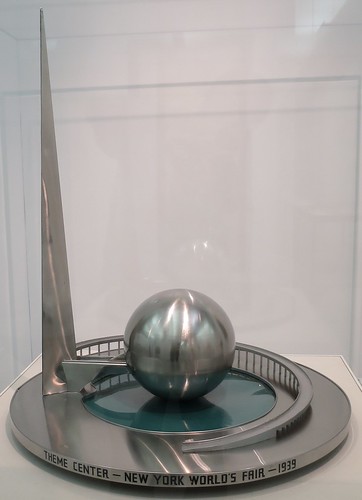
Model of the Trylon and Perisphere, symbols of the fair.
When Frank Baum wrote the Wizard of Oz he based the Emerald City on the 1893 Chicago Columbian Exposition – the Chicago World’s Fair. The fair’s colossal white classical buildings and those of many fairs to follow, would inspire the civic architecture of a young nation coming of age. Baum’s Emerald City was white – until you put on the green glasses! The 1939 World’s Fair, forged in the middle of the Great Depression, sought to bring a new vision for American life as well. It brought more central planning and a stark modernism in its architecture – adding a bit of Art Deco for good measure. The Emerald City of the movie version, made in 1939, looked to the New York fair for its inspiration. That fair was ‘a horse of a different color.’ The Trylon and Perisphere were white, but the buildings were many different colors as they were arranged around the central iconic building. The ‘World of Tomorrow’ is seen from the eyes of a ten year old boy who visited with his family in the Summer of 1939.
This week I will be working with students of Fundoodle Art Camp as they construct a miniature World’s Fair. Here is an introductory video I prepared for them.

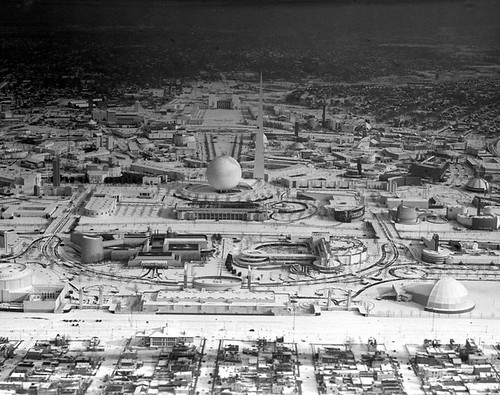
The 1964 World's Fair
55 Years Ago, The World Came to New York Again!
Lift your vision high,
we're in a way we've never been before.
Lift your vision higher,
and you will see the glory of the Lord.
For without a progressive vision
we dwell carelessly.
Without a progressive vision
we dwell carelessly.
So lift your vision higher
and you will see the glory of the Lord.”
– Unknown
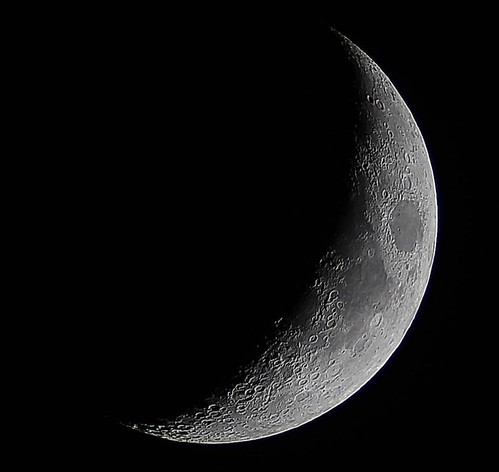
On Saturday, July 6, 2019 the moon was roughly the same waxing phase as it was on July 20, 1969. In honor of the 50th anniversary of Apollo 11, Michal Warzecha took 50 shots with his Canon T3i and 80mm Orion refractor and stacked the images with Autostakker.
Photo by Michal Warzecha.
